Overview
Our team was really excited to explore the world of Human Practices in the competition. Soon enough, we realized how important a part this is, not only for iGEM but for science beyond the competition as well. Other teams’ work made us see that incorporating Human Practices into a project equals raising and being able to answer questions concerning the impact it has on society, whether it will actually make the world a better place, comply with ethical principles and public policies, and be safe to implement. That is only the first step to integrating Human Practices into a project though. Besides taking this step through interaction with various experts and stakeholders, we wanted to take another step towards engaging seriously with society and the people directly affected by our project. Below, we elaborate on the efforts we made to integrate feedback from our Human Practices and incorporate that into our project.
Dr. Prerna Lakhwani
MBBS MS
Fortis Hosptial, Delhi
Dr. Prerna Lakhwani is a dedicated and skilled Gynecologic Oncologist at Fortis Hospital Shalimar Bagh, New Delhi with 20 years of experience. She has numerous articles and papers to her credit in the field of preventive oncology.
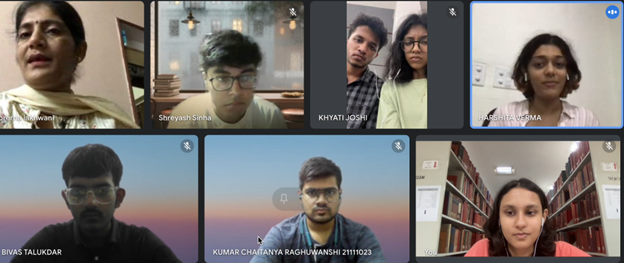
Purpose
Our team approached Dr. Prerna to get valuable insights into cervical cancer diagnosis, treatment and understand about the symptoms experienced by patients in detail.
Insights
- Most of the patients suffering from cervical cancer are in their 40s or 50s and the most common symptoms experienced by them are post coital or post menopausal vaginal bleeding.
- Usually doctors perform clinical vaginal examination or perspeculum examination as the first step to check for ulcering near the cervix followed by a VIA or VILI examination to check for Cervical dysplasia. A PAP test is usually the next ideal step if a VIA or VILI is positive but most patients find the test uncomfortable because of its invasive nature.
- Many patients don’t agree for the PAP test as a preventative measure as they find it costly and redundant.
- Concerns regarding the need for an HPV DNA test that can be performed even in low resource settings and emphasized on the importance of a National Immunization Programme against the Human PapillomaVirus.
Dr. Shalini Rajaram
MBBS, MD, FMAS, FICOG
AIIMS, Rishikesh
Expert in the field of Translational Research, Multicentric trials, Molecular typing of Gynae cancers, protocols and modules for cervical cancer elimination.
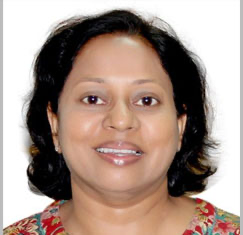
Purpose
We interviewed Dr. Shalini to get feedback on our kit and its feasibility to be used in Cervical Cancer screening camps conducted in low resource settings. Her background helped us in understanding the mentality of people coming to these screening camps and the difficulties faced by the team in the process. Along with that we also discussed various limitations of traditional screening methods like the PAP smear.
Insights
- The biggest limitation of the Pap test is that, like many tests, it does not guarantee accurate results. To guarantee accurate results, the PAP test needs to be performed in highly sophisticated laboratory environments unlike Government Hospitals in India
- Most of the time PAP tests return false positive or false negative results. For this reason, when a Pap test returns with a positive result, meaning abnormalities were found, a doctor will typically perform another test before discussing treatment options with the patient
- Other HPV DNA testing methods like the COBAS test use self sampling techniques but are expensive and cost around INR 3000 while take around a week’s time to process results
- She emphasized on the need for a fast and sensitive HPV DNA testing kit that can accelerate screening in rural areas overcoming barriers like cost, diagnosis time, sensitivity and specificity
Dr. Anupama Bahadur
Additional Professor & Unit Head in Department of Obstetrics & Gynecology at AIIMS Rishikesh (Uttarakhand). She is a trained Robotic Surgeon. She did her Commonwealth Fellowship in Reproductive Medicine from University of Aberdeen, Scotland and has keen interest in Infertility & IVF.
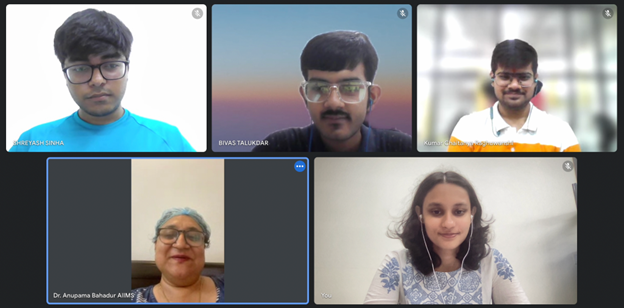
Purpose
Dr. Anupama and her team have extensive experience in conducting cervical cancer screening camps in villages in North India. Our team interacted with her to understand the diagnostic methods used and challenges faced to organize screening camps in rural areas
Insights
- PAP test was used for screening in the camps conducted in villages surrounding Rishikesh in Uttarakhand
- Women in rural areas are hesitant to take the PAP test without any active symptoms
- Antenatal visits can be utilized as an important opportunity for cervical cancer screening and it is convenient for post partum women to get screening in an already scheduled visit
- Due to the low sensitivity of Pap smear, premalignant lesions of the cervix can be missed in some women
Dr. Deepa Joseph
MD DNB Radiation Oncology
Professor at All India Institute of Medical Sciences Rishikesh. Expertise in the disciplines of oncology, radiotherapy, immunotherapy
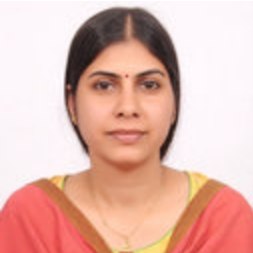
Purpose
We interviewed Dr. Deepa to get a better idea of the real stats on the number of patients that actually approach oncologists for screening as well as to address some general doubts regarding the process of diagnosis and treatment once the patients approach with symptoms. We also discussed the feasibility and cost effectiveness of currently prevalent screening methods, the stigmas around and barriers to being tested and how our kit would make a difference in the present scenario.
Insights
- We came to know that the actual number of patients that come to their oncology OPD to get screened for HPV infections by themselves is actually very close to none and we have to involve with organizations that work for welfare of people in rural areas to increase the screening in such areas.
- She pressed on the importance of the screening method being cost effective, whether it’s a PCR or PAP smear test, and validated the PCR kit method for its easy to use nature which hardly requires any professional setting or equipment or expertise. She also mentioned that a vaginal swab is more acceptable to patients than invasive smears.
- Compared VI test with acetic acid to PAP smear test. A VIA can be done with any trained non clinician which is easier to administer than PAP smear as well as more affordable, although it is only used for highlighting possibly suspicious areas in the cervix by acetowhite patches on the squamous intraepithelial tissue which can later turn into cervical carcinoma which can later be subjected to more specific investigation if found.
- Majority of the cervical cancer cases that come forth to get medical help are in the late second, third or fourth stages where radiation and chemotherapy become the only options and the chances of getting cured are slim. The problem is that people don’t get tested in the initial stages which could possibly be because of no existing govt backed screening programs that would push people to get screened as a community activity. If detected at early stages almost 90% of cases are curable.
Dr. Debojyoti Chakraborty
Molecular Biologist working in the field of embryonic stem cell biology, genome editing and CRISPR. Dr. Debojyoti Chakraborty teamed up with other eminent scientists from TATA institute to bring out the CRISPR technology based FELUDA Covid-19 test kit
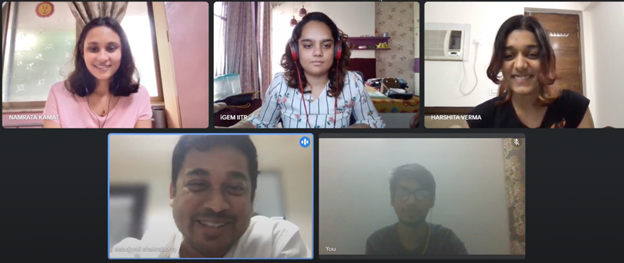
Purpose
Our team approached Dr. Debojyoti Chakraborty to get detailed insights into the use of CRISPR technology to develop point-of-care detection kits. We also discussed about pre-amplification of DNA in clinical samples to produce better results and scope of commercialization of CRISPR based kits.
Insights
- Pre-amplification of DNA using PCR increases the amount of target gene to a point of appropriate sensitivity, that can actually detect it using the kit
- Recombinase Polymerase Amplification reaction for DNA is highly sensitive to contamination, and amplifies any kind of DNA that might be there in the vicinity. This issue with RPA can be negated to several extent with the help of Loop-mediated isothermal AMPlification(LAMP), where the sensitivity is not that high for non-specific amplification
- There is tremendous scope for designing the point-of-care detection kits using the CRISPR systems along with upcoming startups and companies working in that domain. Route of commercialization in the Indian scenario with these kits providing a closed system with minimal handling is the most attractive.
Prof. Gopinath Parickswamy
Professor, Department of Biosciences and Bioengineering IIT Roorkee
Prof. Gopinath has extensive research experience in the field of Biosensors and Biomedical nanotechnology
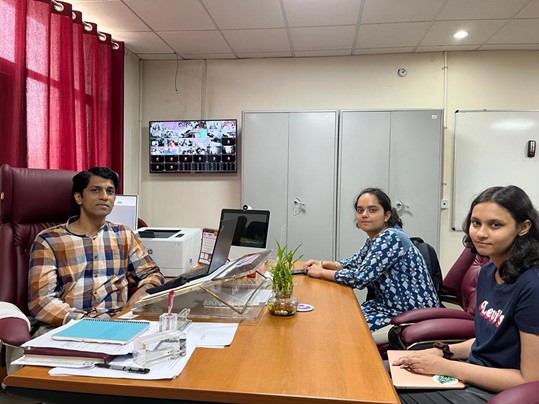
Purpose
We interviewed Prof. Gopinath to get more insights on development of LFA based kits not just for HPV but detection of a range of pathogenic infections like Sexually Trasmitted Infections and Urinary Tract infections
Insights
- Lateral flow assays continue to be among the most common POC tests due to their quick readout, low cost, and ease of use and the recent work on assay improvement and sample enrichment by preamplification is now addressing its drawbacks of low sensitivity
- LFA strip membrane can also be adjusted to delay fluid flow and increase reagent interactions to ensure that reagent binding is optimal, increase sensitivity and reduce detection time.
- Using dissolvable barriers between the conjugate pad and test line and between test line and control line has been proven effective in increasing LFA's sensitivity
Prof. Soumitra Satapathi
Associate Professor, Department of Physics
Indian Institute of Technology, IIT Roorkee
In IIT Roorkee, his research group is actively indulged in the fundamental understanding and transnational applications of various functional materials using steady state and transient spectroscopy. This includes perovskite based solar cell, LED, photodetector etc and microfluidics based lab-on-a-chip device

Purpose
During our All India iGEM Meet up we received feedback from the panel of judges that the performance of reactions involved in our kit can be improved by incorporating them on a microfluidic chip. We decided to approach Prof. Satapathi to explore the possibility of designing a microfluidics device suitable for CRISPR Cas 12a system.
Insights
- Performing CRISPR reactions in a serpentine microfluidics channel increases the efficiency of the CRISPR/Cas12a reaction and it may eliminate the need for pre-amplification of the viral DNA as compared to the reaction being performed in Eppendorf tubes
- The reagent flow in the microfluidics chip can be automated using syringe pumps making the device completely point-of-care
Based on the insights received from the interview, we have also designed a preliminary microfluidics chip under the guidance of Prof. Satapathi to perform Virus enrichment, DNA extraction and CRISPR reactions. The details of the hardware concept and architecture can be found at the
hardware page









